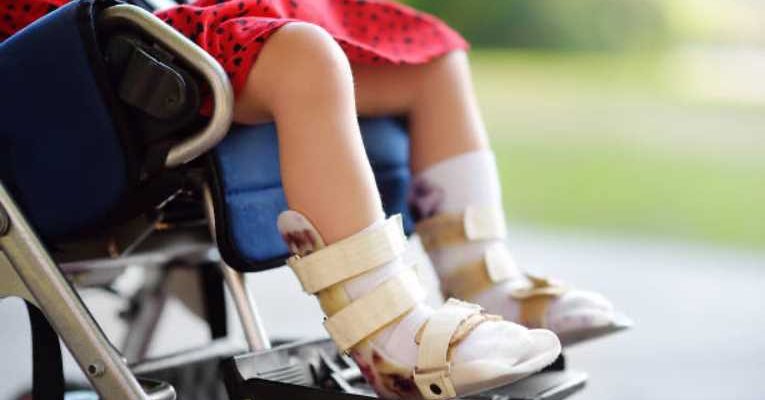Erb’s palsy or Erb–Duchenne palsy is a muscle weakness in the shoulder or arm that may occur due to injury from birth or later in life. These injuries can be minor and resolved in a shorter period or become a lifelong issue. It happens commonly in infants whose shoulders were injured at the time of delivery. Erb’s palsy is caused by damaged nerves and can be classified according to its severity.
The Erb’s Point is located where the nerves join to form the brachial complexes. On the other hand, Erb’s Palsy can be described as a type of obstetric brachial injury. It can cause sensation loss, weakness or paralysis in the shoulder, and upper extremity muscles, resulting in weak elbow and shoulder movements.
What types of injuries are common in Erb’s Palsy patients?
The four types of brachial plexus injuries are:
- Avulsion refers to the most serious type of Erb’s Palsy, where the nerve is severed or ripped away from the spine.
- Rupture refers to nerve damage and not spinal.
- Neuroma occurs when a damaged nerve heals, but the scar remains. Scar tissue applies pressure on the injured nerves and prevents them from sending signals to the muscles.
- The most common type of injury of the brachial plexus is called Neurapraxia. Neurapraxia refers to the nerve stretching beyond its range but not tearing.
Erb’s Palsy Signs and Symptoms
The symptoms may vary based on the type and severity of the problem. Symptoms can range from weakness or soreness to total paralysis of the arm. It majorly affects the shoulder, arm, and elbow. Muscles of the hands are not affected but may experience a tingling sensation or numbness.
Parents should watch for the following symptoms:
- Pain in movement or difficulty moving the arm
- Complete or partial paralysis in the affected arm
- Limp arm
- Muscle weakness
- Muscle atrophy
- Numbness
- Problems gripping objects
An afflicted child may not entirely be motionless and could appear weak, sore, or numb.
Erb’s Palsy Treatment
The intensity of the Erb’s Palsy is different and variable. The condition can also differ in how it affects your child’s nerves and the muscles in their shoulder, arm, wrist, hand, and fingers. Your physician will suggest the most effective Erb’s Palsy Treatment plan best suited for your child’s unique case to give them the best opportunity for recovery. Your child’s health and symptoms will determine the recommended timeframe for treatment.
Physical therapy is the first and primary treatment after diagnosis. If therapy is not effective, a further assessment is performed before moving on to surgical alternatives.
Natural Recovery
There is always a chance that brachial plexus nerves may overstretch during delivery. The risk is higher in breech births, larger infants, people with shoulder dystocia, or in cases of lengthy and intensive labor since the nerves across the neck regulate the hands and arms. Fortunately, most cases of Erb’s Palsy only result in minor damages to the nerves with minimal or no treatment required. Newborns with this condition can be cured within a few months as it takes around nine months for the nerves to heal naturally. Most babies suffering from this disorder are well-proportioned and do not require any treatment.
Newborns with this disorder are advised Hydrotherapy exercise as water makes it less painful. Additionally, time and moderate use of the affected arm can help in the nerve healing process and allow normal motion and feeling. If you suffer from severe nerve damage, Erb’s Palsy Treatment may be helpful.
Physical and Occupational Therapy
The most frequently recommended Erb’s Palsy Treatment involves exercise. This type of treatment is suggested for infants with minor damage to the brachial nerve. Physical therapy can speed up healing and increase the child’s chances to achieve full use of the arm.
Occupational therapy significantly helps recovery by concentrating on small motor skills and eating techniques. Babies can achieve excellent results from combined physical and occupational therapy to treat the Erb’s Palsy early.
Exercises recommended for infants with Erb’s palsy are quite gentle and easy. The most frequently recommended ones consist of gentle massages, strengthening exercises, range of motion movements, stimulation exercises, and gentle stretching.
Erb’s Palsy Surgery
Surgery may improve the range of motion in some children but may not be capable of curing them all. Most children who have surgery under the age of five undergo methods like stretching the muscles, nerve reconstruction, and remodeling of the bone. Typically, bone remodeling is indicated for children above seven years of age. The Microsurgical Neurolysis surgical procedure is used to restore hand function, although it’s an unpopular and ineffective method to be followed. But, it’s an option surgeons might choose in the most severe cases of Erb’s Palsy. The surgery aims to repair damaged brachial plexus nerves or relieve pressure on the nerves to support natural recovery.
Botox Therapy
Botox or botulinum toxin is an anti-inflammatory drug derived from a toxic substance created by a specific bacteria. The muscles around the area of the injection are temporarily paralyzed. Botox injections are localized, hence, there are low chances of the toxin spreading to the other parts of the body.
In the case of a child with Erb’s Palsy, Botox has been used to increase shoulder flexibility and relax the arm’s functional muscles. In addition, botox injections are sometimes used to relieve contractures.
Conclusion
The treatment of Erbs’s Palsy depends on the severity and intensity. An early diagnosis has a high chance of complete recovery. With the help of physical therapy, children with Erb’s Palsy will be able to gain control over their arms. Only a small percentage of these children will need surgery, with a smaller subset experiencing permanent symptoms. When Erb’s cerebral palsy is identified, it is crucial to get the treatment started as early as possible to improve your child’s chances of complete recovery.
